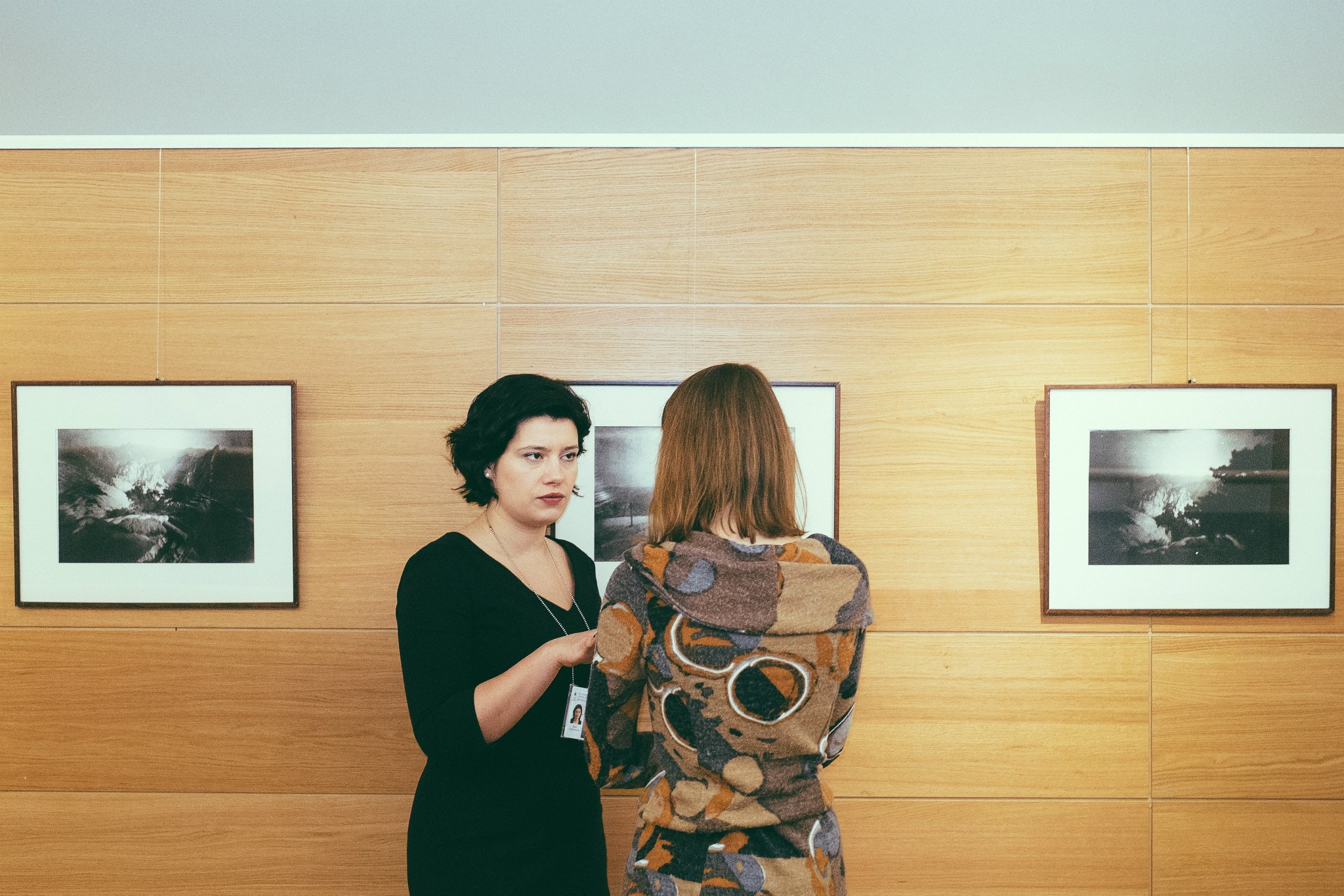On the 5th of March Ieva Rute’s photography exhibition called “Mountains lost in silver” was opened in the Ministry of Foreign Affairs. During this exhibition, traveller, photographer and a professor of VU Centre of Oriental Studies and Confucius Institute Ieva Rute, revealed the beauty of the Chinese mountains which she captured from never seen angles. Photos were taken in Chinese Yellow (Huangshan 黄山) and Lotos (Huashan 华山) mountains in 2010.
It seems there is nothing else left that one didn’t see in the photographies of mountains because there are numerous of such pictures on the Internet, in the albums of travellers even in the advertisements these days. Ieva Rute has proved that it isn’t true, there are so much more to see. The author of this exhibition used pinhole camera, the oldest principle of photography which is known as “camera obscura”. This allowed the artist to avoid bright and colourful photos and made them look quite mysterious, photographies seem to have a special aura in it.
This principle of photography is so special because of the fact that photographer cannot see the real frame which is going to reflect on the tape. Due to this, it makes challenging to use such techniques because the author has to predict how the photo will look like. Moreover, this principle is time consuming due to the fact that the light has to reach inside the box through the small hole which is made by needle in order to capture the desired view. This sort of photographic principle is rarely used nowadays because the technologies are highly advanced. Nevertheless, the author still has chosen this technique and this decision tells us her approach towards mountains and how she wants to show them to others. To achieve this, what is important is not to make a detailed visualization of a particular object, but rather express the feeling and idea in the photo. The art pieces that were displayed in this exhibition shows not the actual mountains, but the person who is looking at them, making the photos more powerful – it let's not just to see the captured view but to reach the viewer’s mind which would normally ask what he is really seeing in one or another photo, what it means to him. The author believes that perfect composition where flawless beautiful mountain landscape is illustrated would pale next to the feeling which is reflected. Moreover, photos are kind of unfinished, the viewer is challenged to concentrate on his felling and to finish the view with his imagination on his own, speculating what was left behind the white and black spaces, - this is how the author shares her thoughts about her exhibition.
During the opening ceremony, the welcome speeches were said by the director of URM Latin America, Africa, Asia and Oceania department Ina Marciulionyte who expressed her delight with close relations between Lithuania and China. Chinese ambassador Liu Zengwen and temporal director of Asian Art Centre Indre Pennock also said a speech in this exhibition. Moreover, the head of VU Confucius Institute prof. Zhang Donghui, the head of VU Centre of Oriental Centre as well as director of Confucius Institute prof. Audrius Beinorius also visited this exhibition.
VU Confucius Institute is happy with the art pieces made by Ieva and we wish her great success in the future.

